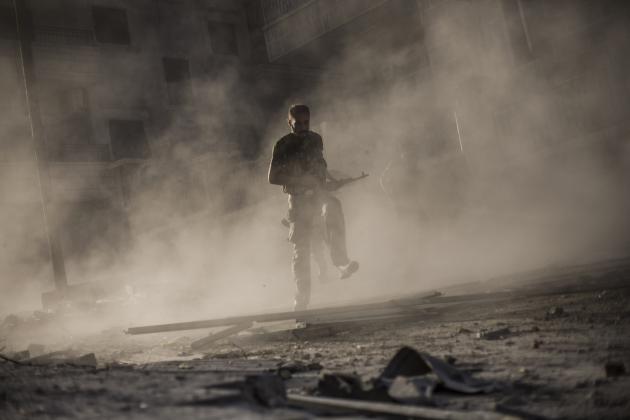
In The Wake of Poseidon is a solo show by Spanish photographer Manu Brabo, award-winning photojournalist and winner of numerous awards including the Prix Bayeux – Calvados in 2012, Award Pulitzer in 2013, British Journalism Award in 2015, POYi in 2013, 2016 and 2017 and estimated among the 25 most influential personalities in culture, politics, journalism and sport in Spain in 2018.
In Greek mythology, Poseidon is the god of the sea, earthquakes and tsunamis; in 1970 it was the second King Crimson album, which recorded a masterpiece in a moment of total instability for the formation of the group. Manu Brabo has personally chosen the title of the exhibition, a peculiar tool dear to him: the journey, the discovery, the sea that is the place where he grew up, but also the sadly contemporary boats, rock and the 70s, beauty and horror.
It is not easy to define the work of Manu Brabo, beyond the international recognition as a photojournalist received from a very young age, his work touches the typical ease of great artists in different fields and languages. He studied photography at the Oviedo School of Art, knows the history of art and understands himself from his shots: how not to think of a male Pietà that recalls the torment of a father who holds his dead son in his arms, an image that is was the Pulitzer Prize Was it worth it? Or to Caravaggio when he photographs children and a priest around a table for an Orthodox mass?
His guerrillas remember Jimi Hendrix, they take their rifles like a guitar from which to shoot the distorted sound of the cry of a boy whose puberty mustache is coming and who at fourteen would like to think about music, girls and beer, don’t kill his peers.
Among the facades used by Brabo is that of the sniper hole, Brabo winks at the Seventh Art and in particular at the cinema of Michelangelo Antonioni and Blow Up. “I don’t know what reality is. The mind escapes us all the time … I am always wary of what I see, of what an image shows us, why I imagine what is beyond, and what is behind a image is not known The Blow-Up photographer is not a philosopher, he wants to go and see more closely, but it happens that, enlarging it, the object itself breaks and disappears, so there is a moment when reality is grasped, but in the next moment that escapes. This is a bit of a Blow-Up sense, “wrote Antonioni. The photographic enlargement, the push towards the particular through the sniper’s perspective, leads to look at different levels of reality, but the more we expand, the more we get to the point where everything evaporates. In Brabo, the disappearance is clearly metaphorical: the city as a political and economic place to crumble under the bombs, the basic rules of civil life, the family, life itself.
On display a dozen shots of different geographical areas devastated by conflicts and a video projection on the external walls of the gallery on the occasion of the opening of the exhibition. (Galleria Raffaella De Chirico press-release)
Galleria Raffaella De Chirico. Via Giolitti, 52 – Via della Rocca, 19 – 10123 Torino
http://www.dechiricogalleriadarte.com
Image: Manu Bravo
